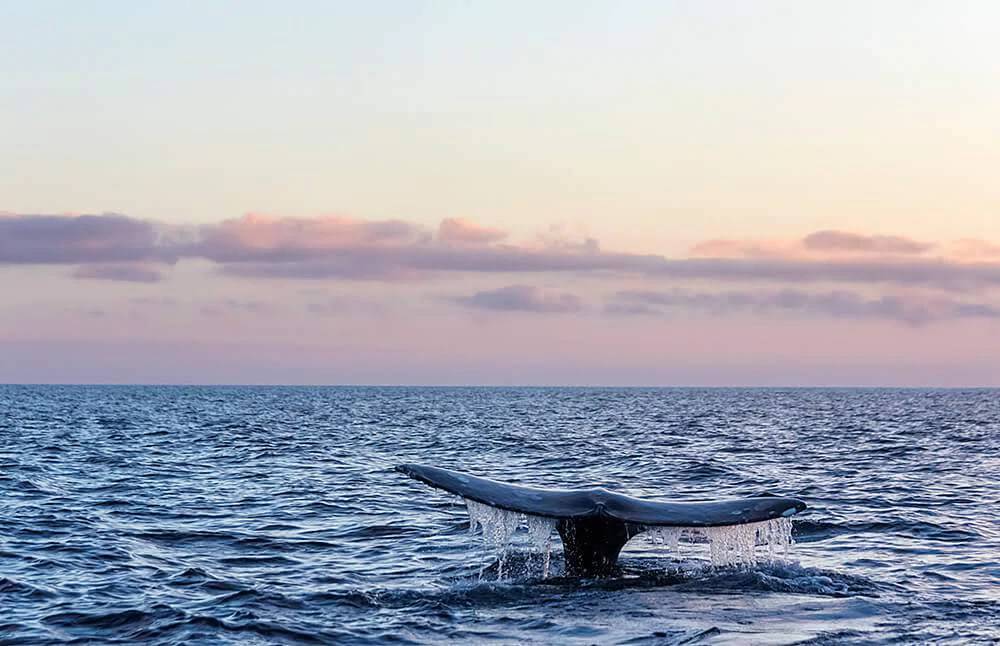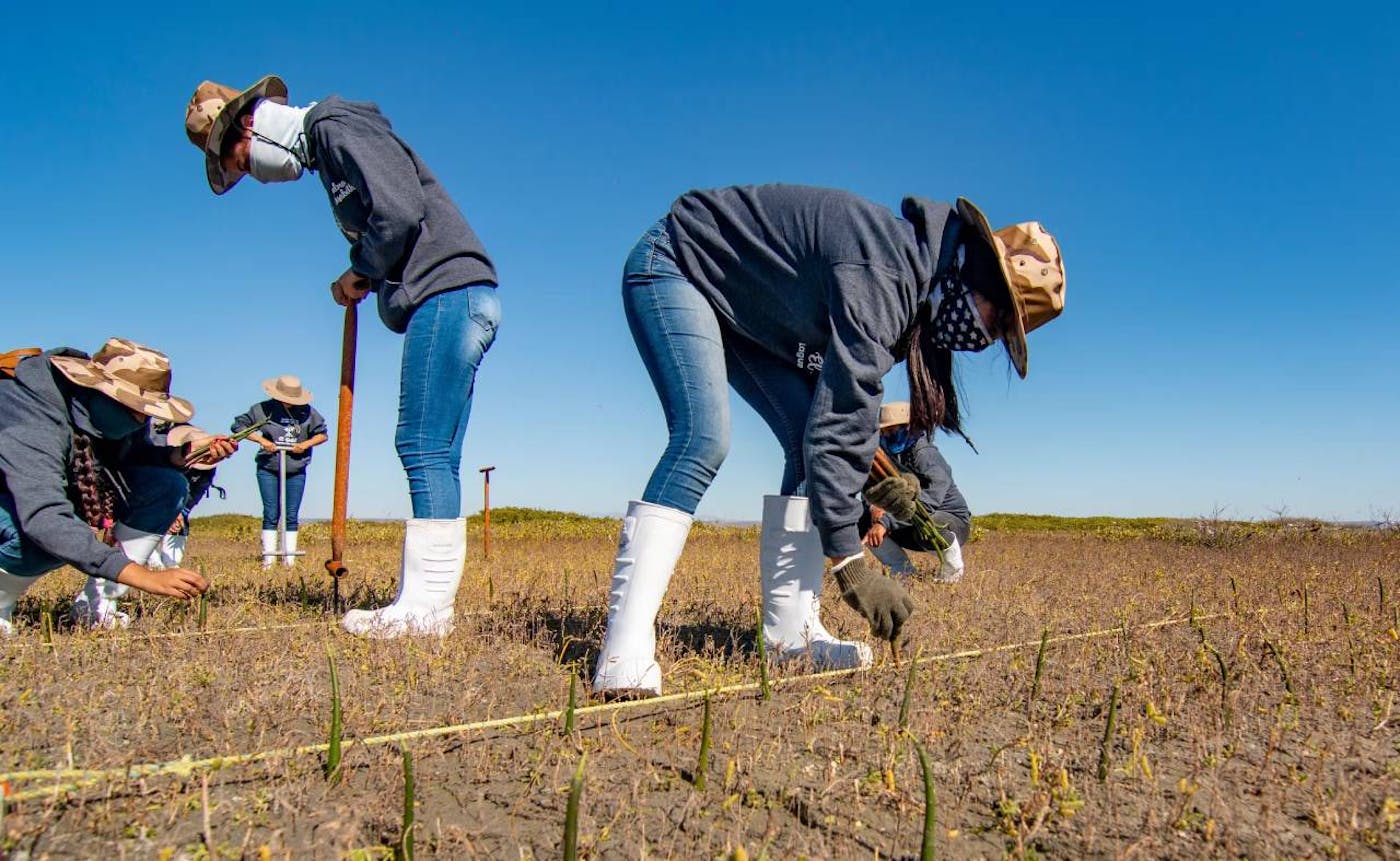Protecting Gray Whale Birthing Lagoons from Sea Level Rise in Baja California, Mexico through Women-led Restoration
- Ecosystem Restoration
- Mangroves
- Women
- Biodiversity
- Wildlife
- Sustainable Livelihoods
- Daughters for Earth
- Mexican Drylands
- Northern America Realm
| Bioregion | Baja California & Southern Deserts (NA30) |
| Category | Nature Conservation Our project categories represent one of three core solutions pathways to solving climate change. Energy Transition focuses on renewable energy access and energy efficiency. Nature Conservation includes wildlife habitat protection and ecosystem restoration, as well as Indigenous land rights. Regenerative Agriculture supports farmers, ranchers, and community agriculture. |
| Realm | Northern America The Project Marketplace is organized by the major terrestrial realms divided into 14 biogeographical regions – N. America, Subarctic America, C. America, S. America, Afrotropics, Indomalaya, Australasia, Oceania, Antarctica, and the Palearctic realm, which coincides with Eurasia and is divided into Subarctic, Western, Central, Eastern, and Southern regions. |
| Partner | SeaTrees by Sustainable Surf |
One Earth’s Project Marketplace funds on-the-ground climate solutions that are key to solving the climate crisis through three pillars of collective action — renewable energy, nature conservation, and regenerative agriculture.
Climate change is affecting Laguna San Ignacio, Baja California, Mexico ecosystems and communities. Sea-level rise and storm surge have intensified currents in estuaries, increasing erosion of the main channels. This has caused the mortality of the red mangrove trees that fringe the lagoon. Laguna San Ignacio is a flat area that has already experienced flooded homes and roads, and the problem will only worsen. Without the protective barrier of mangrove forests, storms combined with sea-level rise directly threaten local communities and the integrity of the lagoon itself.
This project is located in Laguna San Ignacio, a UNESCO World Heritage Site, and is part of the El Vizcaíno Biosphere Reserve, Latin America’s largest wildlife sanctuary. The lagoon is a critical habitat for the California gray whale because it is one of three birthing lagoons on their annual 12,000-mile migration. It is also essential sea turtle habitat, with leatherbacks, hawksbills, green turtles, and olive ridleys all feeding within the lagoon.

Image credit: Courtesy of Claudio Contreras Koob, SeaTrees
Over the past 15 years, the nonprofit organization WILDCOAST has worked diligently to conserve gray whale habitat, train local whale watching guides in proper management techniques, and even help boat operators obtain less polluting outboard engines for their skiffs. Now, SeaTrees (a program of the non-profit Sustainable Surf) has partnered with WILDCOAST to help protect Laguna San Ignacio from climate change and sea-level rise through planting mangrove trees.
The Laguna San Ignacio Mangrove Restoration Project is currently underway. WILDCOAST has partnered with a local group of women, “Mujeres de El Dátil,” trained in 2019 on mangroves environmental services, seedlings collection, planting techniques, and monitoring and maintenance of restored sites. These women operate the project.
In 2021-2022, the project will plant 50,000 mangrove trees across the 25 acres of mangrove forest. These trees have the potential to sequester 13,800 metric tonnes of CO2 over their 25-year lifetime. Over the next three to four years, SeaTrees and WILDCOAST plan to restore more than 287 acres of mangrove habitat across Laguna San Ignacio. Additional funding will allow the project to scale.
Beneficiaries include the local communities which depend on the mangrove trees for protection from storm surges and sea-level rise. El Cardon, a fishing village of 102 people, floods frequently. The community depends on fishing and eco-tourism, which require a healthy lagoon ecosystem. Endangered species also benefit from the project, including California gray whales and four species of sea turtles.
SeaTrees and WILDCOAST also brought a National Geographic film crew to the lagoon in March 2022 to film the project and the surrounding ecosystem. This will provide media content and storytelling opportunities to further increase fundraising, attention to the project, and awareness on one of the most critical biodiversity hotspots in Latin America.

